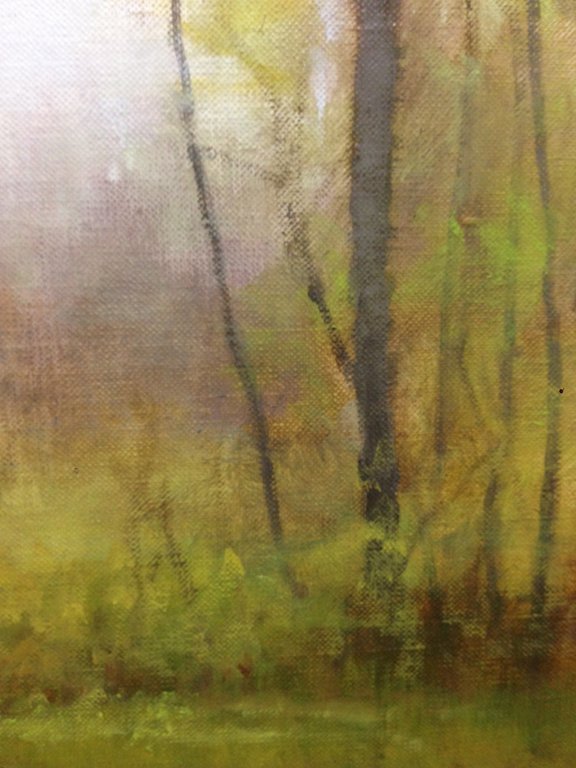As many of you know, I primarily work from memory and imagination. Many years ago, I started to explore this way of working, and now it has become second nature to me. It is also part of the method I teach my students. I wrote more about that
here and
here.
One of the strongest reasons to train your visual memory is the power it has to distill and intensify your experience of the landscape, and as a result of that, to assist you in creating a very personal response to it in your art. As Carlson says, this helps us to locate the source of our originality.
It is our personal response to the landscape we seek to express, rather than a copy of the scene in front of us. Because memory acts as a filter to select certain information while rejecting other information, it is a highly personal tool for art making.
I spent last week in Fredericksburg, Texas with
Mallory Agerton, a friend and former student. Mallory completed the Atelier Program in 2015. In fact, she was part of the first group of students that I used as 'guinea pigs' for my memory training exercises. Today, as a professional artist, she works from the drawings she makes in the field and memory (no photography).
We also spent a week together last year at about the same time of the year. On successive evenings we went out just before sunset to observe the landscape. We were both taken with a little creek we found and spent about 20 minutes each night for three evenings looking at it. We both did drawings of it from memory later.
Here is Mallory's drawing.
And here is mine.
Obviously they are very different. After we made our drawings we talked about what we saw and what we were interested in about the scene. For me, the large tree and its gesture against the sky, the intimate space around the creek and the sliver of water made a big impression. I also wanted to get my drawing dark enough to suggest the failing light. Mallory noticed a smaller tree in front of the big one and the filigree of its branches against the sky. She also wanted to simplify the whole scene into very simple shapes. She depicted it as more open.
When I got back home I painted this little study from memory. The idea that I captured in the drawing was further distilled and sifted again through memory (including remembering the color).
Hill Country Dusk
10 x 9
Of course, there isn't any right or wrong here. Both Mallory and I responded to what was most interesting and our memories were strongest of the things that interested us most. Those things to a very large extent reflect our personal aesthetics. Memory, if properly trained and used, will help you identify the things you really want to paint--not things that are merely interesting, but the things you find truly compelling.












































